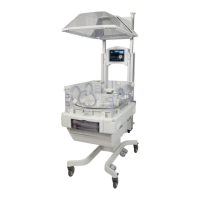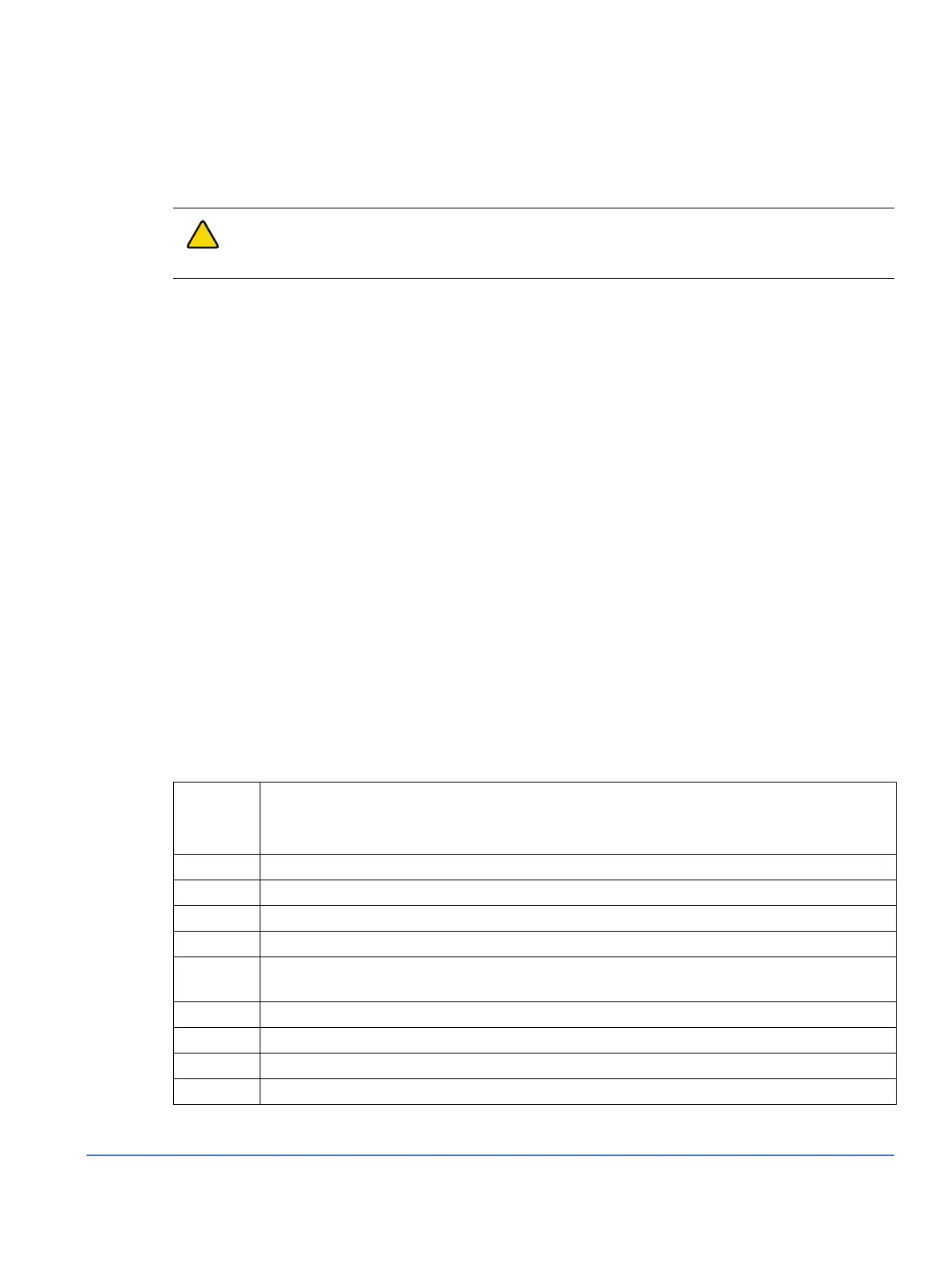C-1
Appendix C: RS-232 Serial Data
Note: In the event of a power failure, all serial communication will cease until power is restored.
C.1 RS-232 Connector
The Nurse Call and the serial data output share the same female, nine pin, d-type connector.
• Pin 2: Receive Data (incubator input)
• Pin 3: Transmit Data (incubator output)
• Pin 5: Gnd (Signal Ground)
C.1.1 Cable Requirements
The user interface cable must have capacitance less than 1500 pF. It should be a shielded cable such as
Belden 9611 with AMP shielding kit 748046-1 and ferrule 747579-8.
C.2 Data Stream
The data stream from the Giraffe products is repeated every two seconds. The RS-232 parameters are
19200 bps baud rate, no parity, 8 data bits, and one stop bit. The data is in ASCII format; the string is
described below:
HYB_1.40,36.1,OPEN,28.3,33.0,36.5,100,N,N,C,00,063,D,L,02043,0000,00,43,000,000,03,00
Warning: The computer or RS-232 monitor’s user program must continuously check the data
link. The program should constantly verify connection to the control panel and check for
updated data.
HYB This is the product code.
• HYB represents an OmniBed.
• INC represents an incubator.
1.40 This is the control board software revision (thermoregulation in the startup screen).
36.1 Temperature from Patient Probe #1.
OPEN Temperature from Patient Probe #2. OPEN represents no probe connected.
28.3 Air display temperature from the compartment probe.
33.0 Desired Environmental Temperature (DET). In Air Mode, this is also the air control
temperature.
36.5 Patient control temperature.
100 Heater power.
N Patient mode. This is either P or N.
N Open bed mode. This is either O or N.

